anyone ever gutted the entire inside of a house
Anyone ever done it... any advice?
Before you get upset about the original house being gutted... let me say that there isn't anyting "original" left inside. The house was built in 1920, and was converted into a tri-plex at least by the 50's. As with most rentals... nothing original is left, no doors, hardware, floors, windows.... nadda.
My husband and I own our house which is a 1917/18 Foursquare, the rental is right next door. We are thinking of selling our house and using the equity to pay off all debts and move into the "rental" and convert it back into a single-family home. It's been remuddled, so we would definately have some cleaning up to do, but I still think there is enough charm left that it would be worth doing.
So, again, anyone ever gutted the inside completely and start from scratch? Advice?
Comments (34)
mikie_gw
16 years agolast modified: 9 years agoAround here if you do something like that, and if the value of the improvement is more than 50% of the value of the home - suddenly all kinds of new codes come into effect which must be met.
Sometimes a current code rule like property setback or other major 'complies with code' item condems your home almost completely, sometimes just bringing the structure up to current hurricane build standards gets ya.eandhl
16 years agolast modified: 9 years agoWe are in the process of renovating an oldie. We gutted and tore down a bad addition to rebuild it. It gave us a chance to shore up all rafters, replace some questionable posts and beams, put in new soy based insulation, put windows where we wanted them and yes code came in there. (Bedroom window sizes)as well as electric and plumbing codes.
We are probably putting in more than the value to most but not to us. Good luck if you decide to do it.Related Professionals
Montebello Kitchen & Bathroom Designers · Palmetto Estates Kitchen & Bathroom Designers · South Sioux City Kitchen & Bathroom Designers · Cloverly Kitchen & Bathroom Remodelers · Idaho Falls Kitchen & Bathroom Remodelers · Linton Hall Kitchen & Bathroom Remodelers · Londonderry Kitchen & Bathroom Remodelers · Los Alamitos Kitchen & Bathroom Remodelers · South Lake Tahoe Kitchen & Bathroom Remodelers · Spokane Kitchen & Bathroom Remodelers · Thonotosassa Kitchen & Bathroom Remodelers · Westchester Kitchen & Bathroom Remodelers · Glenn Heights Kitchen & Bathroom Remodelers · New River Architects & Building Designers · Pembroke Architects & Building Designerssolferino
16 years agolast modified: 9 years agoWe are in the last stages of doing the same thing to our 1921 Craftsman. Everything that you described above had been done to our place, plus the downstairs had been a board-and-care and the upstairs had been a meth lab. We didn't feel too guilty about taking the house down to the studs and rebuilding it as it might have been in the 20s. We kept the footprint the same, though, including the "rec room" that had been added to the back in 1972, adding on about 40 square feet where the house had been oddly notched for a wheelchair ramp.
The only thing that was original was the newel post for the stairway; sadly I forgot to tag it and it went into a dumpster on demolition day. We live in a neighborhood of houses much like this, although most are beautifully restored. Now our place looks old instead of the 1968 nightmare it was when we bought it!
Good luck!
quiltglo
16 years agolast modified: 9 years agoI did. Once. To the lathe and coughed up gobs of grey stuff from that horsehair plaster. We divorced half way through the process. Don't know who finished the thing. I'm just thankful it wasn't me.
Gloria
hatman52
16 years agolast modified: 9 years agoYes. We did an entire house several years back. It was so messed up and abused that saving anything wasn't an option.
It's a hard, dirty, and potentially dangerous job. I wouldn't do it if I lived in the house. In fact, after doing myself, I wouldn't do it myself again. I'd hire a crew to come in and do it. By the time you pay for the dumpster rental, haul the debris out (you can't imagine what a room full of plaster weighs, and how much work it is to get that out of the house and into the dumpster), swing sledgehammers & crowbars for days, breath in dust containing god know's what (even using a respirator, I was blowing black stuff out of my nose after each work session). You really need to have the electric off, as you don't know what's inside the walls, which means you can't even run tools, lights or a fan.
Also, keep in mind that if you go that far, many local codes are going to require you bring the building up to modern standards, which in many cases calls for 2x6 exterior walls. Which means shimming/sistering each and every exterior stud. Which means redoing all the window casings, baseboards, probably some door trims, etc. Also, you'll find a lot of the wall studs, both on the interior and exterior walls, as well as the ceiling joists, are very uneven and will require extensive shimming or sistering to ensure a smooth, level finished drywall surface.
All of the plumbing and electric will probably need to be replaced (you'll want to do it anyway while the walls are open).
Oh, and don't forget the approximately 10 million tiny lathe nails you'll have to pull out of each stud and ceiling joist in the house.
Gutting a house isn't rocket science -- anybody who can swing a sledgehammer can do it. But it is extremely hard, dirty, potentially dangerous, and physically taxing work.
kframe19
16 years agolast modified: 9 years agoYes, I have.
Be prepared for a LOT of "what the heck were the builders doing" moments as you open up the walls.
Make sure that you kill ALL of the electricity in the house. You otherwise may find some active knob & tube wiring the hard way.
Rent a dumpster.
This I can't stress enough... CLEAN AS YOU GO. Nothing worse than going from room to room ripping down walls and ceilings and then realizing that you don't have enough room to move to clean, and you also don't know where the tools are that you buried 3 rooms ago.
Use filter masks (positive pressure masks are best, easier to breath) and a lot of exhaust fans to manage the huge amounts of dust.
Have a first aid kit.
Wear boots. Nothing sucks worse than having a nail in the foot.
As a preventative measure, get your tetanus shot up to date if you haven't done so.
Have a bug bomb and wasp spray just in case.
Have a large fire extinguisher at the ready.
Drink LOTS and LOTS of water. It's amazing how quickly you can dehydrate.
tryinbrian
16 years agolast modified: 9 years agoYou can get in over your head pretty far, pretty fast in real estate, and it sounds like that's what you're thinking of doing.
Now, if you had said you were going to buy it, and work on it while you continue to live in you present house, that would sound like a plan. (Not necessarily a profitable plan, but at least not a disaster in the making). If, however, you're going to sell your present place to get the money to buy this place (and settle other debts), plus you're going to "gut" the new place, that sounds like homelessness to me.
I also am unclear on what "charm" you are salvaging, given the necessary gutting. I suppose you must mean the exterior charm, and street appeal, which is certainly worth something. When I purchase a fixer-upper, however, I feel better if there are SOME features inside that I like, esp. the room layout, which can be expensive to change. And I try to save as much as can be reasonably salvaged. Oftentimes what's needed most is a little attention and lots of elbow grease.
darlinw1
Original Author16 years agolast modified: 9 years agoThanks to all the posters above. To the last poster... we already bought it and it was a pretty good deal. If I could live in my house now and work on gutting the house, I would love that, but I can't since the renters pay that mortgage and I can't cough up enough dough to pay that mortgage and my own right now.
And yes, the only charm left is the exterior street appeal. Right now we removed the asbestos tiles and are replacing/repairing the original Dutch clapboard siding, replacing jalousie windows (actually all windows are being replaced) and painting the house.
We will then sell our house, move into the downstairs rental and still rent out upstairs and the efficiency to help pay the house off in 2 1/2 years. Then we are going to keep living like that and save up about $100,000 or a little more to put towards the remodeling. That said, we should be doing the remodel and conversion to a single family house about 4 1/2 years after we move in.
Since the house is a tri-pled right now... the room layout isn't worth saving. I mean, the stairwell is outside of the main house right now... so we would have to tear the house down to the studs pretty much.
I wish it was just attention and lots of elbow grease... but not this time.
Darlynn
Lakeland, FLtryinbrian
16 years agolast modified: 9 years agoSorry, darlinwl, didn't mean to second-guess your purchase decision - I think the place is bigger than I had envisioned. Perhaps you can avoid the "homeless" predicament I had worried about by partitioning off a section at a time for renovation, while keeping another section reasonably comfortable for living quarters.
The most memorable lesson I have had from my renovation experience is the need to constantly deal with the mess and disorganization of the site. If you forget about it for even a few hours, it has a way of rearing it's ugly head by causing lost tools, materials and sanity. I think if I was living on the site, this lesson would become even more important.
I was cheered to hear you say your are "replacing/repairing" the dutch siding. I had a similar job last summer with some old cedar shingle siding that was in pretty rough shape. The conventional wisdom around here is to cover it all with vinyl, but I was determined to save the casual beauty of the shingles. It was some work, but I am quite pleased with the result, and so far it looks like it's going to hold up pretty well.
Hope you're able to follow your plan - you can't be the pleasure of a well re-built old house!
macybaby
16 years agolast modified: 9 years agoI'm in the process of doing that right now. Oldest part of the house was built around 1875, with several additions over the years. The oldest part was actually a Claim Shack that the original homesteaders built. We were going to tear down that section, then found out it was the original home. The second section of the house was moved on the property around 1900, and is actually older than the one build on site (it has square nails). Both of those two sections are sitting on rocks.
We've been going through the house section by section, removing everything down to the studs and dirt and going from there. We aren't trying to salvage anything, as there wasn't anything of interest to salvage. The house has been remodeled before but unfortunately a lot of problems were covered up, not fixed.
We've been at this for 2.5 years and still have a ways to go. I think I've forgotten what it's like to live in a clean house. We've done all the work except some excavation and rerouting the incoming power lines.
I've also taken lots of pictures.
Later this summer we plan on starting on the two story section. We know the sill needs to be rebuilt. Plan on gutting the entire structure and then jacking it up to fix the base. Lots of rot on the corners, and one is 3" lower than the others.
Cathy
Here is a link that might be useful: Lots of pictures (if link works)
stanlie_gw
16 years agolast modified: 9 years agoBTDT. Never again. I think Im still snorting up stuff and that was years ago.
Along the way Ive learned that you can patch just about anything. Heck Ive skim coated entire rooms with topping compound. Once you get the hang of it it goes real fast.
Could you elaborate on why you think you need to tear down to the studs. Seriously youd be surprized at what you can patch. Think of it this way.Youre still going to have to do a ton of tapping and mudding even if you do drywall.
Ive lived in houses and rehabbed them. To keep your sanity youl need an oasis . A place to escape the debris. Ours was our bedroom. Its hard to sleep when you look up And think boy I really need to do something about that ceiling before it falls on me. LOL>.
Another thing Ive learned from experience is finish a room totally. Once you have your klediments in a room its hard to make yourself tear it up again to finish it.
mightyanvil
16 years agolast modified: 9 years agoIf you intend to upgrade mechanical and electrical it usually pays to gut the house. But no one should do it themselves. This is work like roofing and floor sanding where the pros are a bargain.
bulldinkie
16 years agolast modified: 9 years agoWe basically did,Some rooms the plaster was bad.Hubby did all new plumbing,wiring,one floor was bad,We put the new radiant floor heat in,New water heater,heat unit,new windows built,alot of time but beautiful when done.We ket all mouldings,trim,doors,floors,the windows we kept old glass had new windows built like what was in.Expensive but glad we did now.
defrost49
16 years agolast modified: 9 years agoWe're in the process of turning the family farmhouse back into a single family. Back in the 70s we helped turn it into a duplex so rental income could keep the house up and taxes paid. We are able to live in 1/2 of the house or one of the apartments while the gutting in the other half takes place. A giant dumpster was rented and a group of friends in the construction business (husband is in the business) were invited for a demo party. Long, filthy day plus another half day of my son and husband working to finish. This is the kitchen ell which was gutted to the shell, partitions in a pantry and sm storeroom removed, back kitchen stairs and wall removed which included stairs to basement and stairs to second floor. Probably would have filled the dumpster a second time but were able to put burnables in a pile out of sight. Make sure you neatly stack debris in dumpster or it will fill even sooner. All workers were provided masks and ear plugs, coffee break, lunch and shrimp cocktail/steak dinner. Plenty of bottled water was available. Some rot was found and later replaced with new wood. The basement is also being dug out plus an additional foundation for a new garage. (Existing foundation is old stone, low ceiling and damp.) Fortunately we have room for all the rocks that were found and can be used later for retaining walls. Keep windows to living area closed during the demolition. The soil under the house and porch was extremely dry like sand. Old lino was ripped up. My husband had probably spent several days getting plumbing and electricty removed but extension cords from other part of the house ran big fans and necessary power equipment.
BTW my husband marked place for dumpster with neon orange spray paint right in the dirt so driver knew where it went. Cell phones have been very handy for drivers to call for directions (they should have had directions already but they don't always get passed along correctly). Keep in mind any weight restrictions on roads and bridges in your neighborhood. Trucks may have to take an alternate route. On some jobs my husband has placed a discreet marker by the road to help delivery trucks find a location. Some people don't want their remodeling advertised. One time he simply used a piece of plywood with a spray painted star. Very helpful if the house is hidden from the road and the driveway is hard to find.
Originally my husband wanted to keep the exterior looking like it always has but while living here we have come to enjoy a screened porch that was added to the rental. It's in a great location to watch the road and who is coming down the driveway. We've decided to keep it but a new porch for dining will be added on the rear/north side of the new kitchen. A woodburning kitchen cookstove will be put in the new kitchen. Unfortunately the cabinets had been built in place in 1947 and were not salvageable. Some wood, really nice boards, were kept for future projects. A 1920s era coal furnace that we use for wood will be installed. The original wood furnace was removed in the 70s project. The house has a certain charm but it's very plain. A "New England" farmhouse.
Good safety advice was posted. Pay heed. There's an awful lot of nails.jane_d
16 years agolast modified: 9 years agoMy DH who has done this before also suggests misting plaster walls with a little water before hammering them to keep the dust down. This helps with dust a lot, but makes the plaster heavier. He then shoveled the mess into a wheel barrel (no carrying that way), and where stairs were involved dumped it out a window instead. The busting and hauling part is best done as a party, with friends.
Lots of luck to you!
scutchinchicago
16 years agolast modified: 9 years agoWe just started renovating our new, 100 year old house. We're trying to move in next weekend and just want the bedrooms finished. Luckily, ours is more cosmetic surgery than a total gut-job.
After ripping out the baseboards (which were 30% by weight lead paint according to a lab we hired to test it!) and ripping extra spots out of the plaster doing it, we decided to stick with the "seal the lead paint in" theory for the moment in the other bedrooms. My husband has been patching plaster and skim coating all week in 2 of the bedrooms. My dad is coming up tomorrow to do the 3rd bedroom. We decided to wait to do the "gutting" of the plaster until we finish the attic out in a few years. We figure the additional weight of the attic space being finished will require more load bearing, so we'll do it all at once (while we presumably live in a rental for a couple months!!) Although, a lot of our neighbors have opted to stick with the plaster and live with the "character" of the cracks that inevidably return. Anyway, good luck. Even just this first week has been a ton of work and we've hardly done a thing yet!
Also, you said you removed your asbestos tiles. How did that work out? Did you need a special company to come and remove them, or did you just follow some local protacol? Or, is it just as simple as using a crow bar and some trash bags? Thanks.jane_d
16 years agolast modified: 9 years agoscutchinchicago-
We're moving into an old place with asbestos tiles. Our home inspector told us that you're really _supposed_ to hire professionals for that sort of thing, but if you were to do it on your own make sure to wet the area down first. This keeps the dust levels down while you're prying it up (same theory as the plaster busting above), and the dust is really what's dangerous about them. You then need to dispose of it properly as hazardous waste... We don't have facilities for that in our area (that we can afford, anyways), so our tiles are staying put for the time being.
I'm also curious to know if Darlynn has any tips on this, since they sound like yourselfers. Are you still on this thread?
Jane
bockhouse
16 years agolast modified: 9 years agoI did it last year. two story timber frame farm house. I started after carefully inspecting the foundation, framing and roof.
It took 3 months working alone, no running water and no electricity. Just me and my crowbar, the house was plaster lathe and in some cases two layers of it and sometimes thin plywood sheets. I tried sledgehammers, saws, etc and the best tool was a $5 crowbar and patience. If you understand how the plaster lathe was applied you know that it will come down alot easier if you jab the bar thru the plaster and lossen the lathe. Go along for a few feet along a joist or post and you will find it starts to come down in manageable pieces. Start slow and practise on a wall until you get the rythmn.
All the other posts are great advice too.
I would do it again in a minute - the beauty of mortise and tendon timeber frame members is wonderful, the satisfaction is better. Its a wonder how well they built this house, the entire roof is carried by the top floor cieling beams around the perimeter of the house, they measure 9" x 11". In two cases 30 feet long.
hostaguy
16 years agolast modified: 9 years agoWe took a more conservative approach when renovating our 1928 Tudor, course our plaster was in fairly good condition.
The house needed new wiring, plumbing, and we needed to remodel the kitchen and bathrooms as well. We decided to create arteries to get these new systems up to other floors. Think of potential opportunities for these arteries when you embark on a remodel. Example, when we gutted the kitchen, we used this artery to get the wiring up to the second floor. We gutted one wall in the bathroom to run our new copper plumbing up and some wiring.
We did gut our basement entirely of 70's paneling and use that to help us channel the new systems up.
So, with a good bit of planning and thinking, you can save the headache of removing the plaster.I for one believe the plaster and some of the cracks and repairs give the house it's age and character. I've seen houses that have been completely gutted and drywalled, they look a bit sterile to me.
It freaks me out when I see people on tv and whatnot, bashing away at plaster without a respirator or something, you know they're sucking in tons of lead paint and possibly asbestos. Think people!
Negatives of removing plaster:
1. The weight of all that plaster and lathe
2. The lead and asbestos dust, yuck!
3. The nails holding the lathe on take forever to remove, and they're rusty.
4. Removing the character of the old walls.That said, if the plaster is trashed, beyond repair, have a company come in and take it all down.
bulldinkie
16 years agolast modified: 9 years agoAlso I dont think you want to move in before done It takes alot longer to get done.And the dirt..We worked on ours over a year then moved it When done.
macybaby
16 years agolast modified: 9 years agoI'll agree about the pain of living in the house while doing it! We are into year three on our project. It's real fun finding room to put things while you are working on another area of the house.
We've got the main level sections done, and now working on the 1 1/2 story.
Here's what I've been up to today.
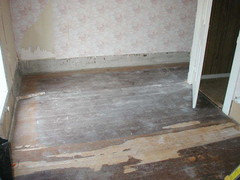
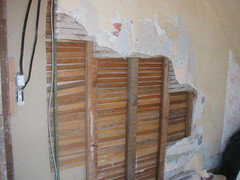
Cathy
worthy
16 years agolast modified: 9 years agoMany partial guts. Converting a myriad of small first floor rooms and halls into open concept living space.
I don't like to think of all the asbestos, horsehair, lead paint and 100 year-old human skin flakes I breathed in.
Now we're all smarter, I hope!
And smartest yet: get a bonded crew to do all the dirty work. Including asbestos abatement!! Save your effort for the rebuild. Much nicer work!
ryan-d
9 years agolast modified: 9 years agoWell, in typical me fashion, I'm replying to a LONG DEAD THREAD....but thought for anyone thinking about doing this, I'd give them my experience.
The house in question was a 1920's home. Horsehair plaster, terrible reno work in the 1970's. Everything 'upgraded' to vinyl, plywood paneling, formica, etc. All original trim work had been torn off to install incorrect cove molding. Think cheap and ugly.
House was purchased for $140K. All work was done by me. It took a year and a half of full time work. You read that right. That's all I did, every day.
I know people on this site are pretty darn handy, but this is definitely not something you should try unless you really know what you're doing. I grew up in the trades as they say. I have worked under electricians. I understand plumbing, slope, and venting. I am also a finished carpenter, who did framing work starting out. And I have a great collection of tools.
All work on this job was permitted. And much of it I got a price break on because I know people who gave discounts because of relationships.
Lesson 1: You need to have the requisite skills to have a home that doesn't look like a handyman did it, when you're done. Most people just don't have the breadth of skill to do it.
The work is at times back breaking. Demo of an old home interior means a ton of horsehair plaster. I'm not an old guy, and wow, was it tiring. My girl tried to help sometimes, and as fit as she is, she just couldn't handle lugging barrels of debris.
So, lesson two is you need to be fairly strong to do the initial work (or hire it out....$3-5K)
You need time, as alluded to above. This house took far longer than I expected. I embarrassed that as experienced as I am, I took this long! The carrying costs basically have destroyed any hope of a profit.
The place is absolutely beautiful. Someone is regrettably going to get a great deal. As a point of reference, when considering my expenses (living), materials, dumpsters, permits, appliances, cabinets, etc....the cost of reno was $140K. Ugh. $140K.
I will never get that back. Bummer.
So lesson three: don't do it! Unless you really really think you are going to live there for a good decade.
In my instance we had multiple people involved who refused to price for the market (everything had to be gutted, everything had to be top notch). That cost time and money.
End of my crazy talk. Hope this helps a would be DIY gutter/reno. I give you credit for ambition!
renovator8
9 years agolast modified: 9 years agoI do it about twice a year. My only advice is to sub it out to a professional demolition contractor and check for hazardous materials before the work starts if possible.
ryan-d
9 years agolast modified: 9 years agoReno8 - how do you deal with the requirement to upgrade everything once the walls are exposed? That is where the chance of a quick turnaround is destroyed. If I did it again, I'd lay 1/4" drywall over the walls to avoid upgrading the lot.
I know guys (very few though) who just demo and do all work themselves unpermitted and keep fingers crossed they don't get caught. Unless you are a licensed plumber and electrician, the numbers don't work for a complete gut.
The only exception in my mind would be a really expensive neighborhood where a home in disrepair could be gotten for very cheap. I have yet to find that situation.
renovator8
9 years agolast modified: 9 years agoRyan, I'm an architect not a DIYer but I would still sub out demolition for my now house. See my comment in 07 as Mightyanvil.
Gunnar Thorsen
6 years agolast modified: 6 years agoI've never gutted a house, but I once helped restore a circa 1790 house that WAS gutted! When we worked on it in the 70's, all of the original features were there: wide pine flooring, original doors, door frames window frames, even windows - some in a bedroom had names and dates like "1802" scratched into the glass panes. Fireplaces had original mantles (we opened up one sealed fireplace and found the original crane and trammel hooks!) and the "best room" had wooden sliding paneled shutters in the window. The house had belonged to a New England sea captain - we had documentation.
A few years ago someone bought the house - and gutted it! All original features were RIPPED OUT. Floors were sanded to look new. Walls and mantles were thrown out to reveal brick. A gorgeous early 19th century corner cupboard was removed so that a granite counter could be installed. The paneled shutters went too. The entire HISTORY of the inside of this 1790 house was DESTROYED, to make it modern. Ironically, the new owners gussied up the outside in 18th century splendor, because it's trendy to do this in this classic New England town..
Own a house as old as this? RESPECT it. It's history belongs to all of us. Good God, the interior features were enjoyed by MODERN families for over 200 years - until the freaking yuppies came.
Beast Sssotlohiefmjn
6 years agoYou complain over what another person does with their property? How American is that? Were the Pilgrims complaining over the Native People houses. Sounds to me you would like the old black and white PleasantVille but if you want that you need to pwn all the properties so you can control their actual identities as you seem to think they have.
Debbie Downer
6 years agolast modified: 6 years agoYou complain over what OPINION another person writes in a public opinion forum? How American is that? Word to the wise - if you post in a public forum asking for opinions on what you should do with your property, that is what you are going to get - OPINIONS on what you should do with your property.
BTW your sentence 4 is whats called straw man argument- ie exaggerate or distort someone's statement, and then attack that.
C Man
2 years agolast modified: 2 years agoLong dead thread but i'll post my two cents.
Yes, once. My wife and i gutted an early 1980's two story colonial (yeah i know it's not old comparatively speaking to other homes mentioned in this thread) but it had terrible wiring, incorrect and undersized plumbing, bad framing, cheappp insulation full of mold, asbestos floors, over 20 windows that were totally shot, an utter disaster of a kitchen, and two hideous disgusting 1980's era bathrooms. It just made sense to gut the place and put it back together right. Plus two previous owners had been heavy smokers and one of them was a creepy cat lady / hoarder who had filled the second floor with tons of junk and way too much weight (I'll come back to that in a minute).But the worst was yet to come. After gutting the place I really started to fully realize that in practicality 2x4 exterior stud walls and 2x8 floor joists for a 2 story home is inadequate especially if the home DOES NOT not have plywood sheathing (just that cheap cardboard wrap) and has 15/32" plywood decking for the floor (should be minimum of 3/4"). We immediately noticed significant sag in all the floors at the center of most of the spans and some of the exterior walls had started to deform inwards. The only solution was to tear up all the floor decking for the second story, remove the interior partition walls upstairs, all the wiring, plumbing, hvac and then sister 2x12's joists to all the old 2x8's after jacking them back up into place. In some places the sag was so bad (well over 5" in the middle of the spans) they had to be cut out, removed completely, and replaced. Would have been impossible to do with wiring, plumbing, hvac in place.
We learned later from a neighbor who has lived here since the 80's that one of the previous owners had been a disgusting hoarder and that she had packed the upstairs floor to ceiling with books, trash, and other belongings for years which created the sag. Worse yet she also had a fondness for cats (most of which were not fixed apparently) and they had soaked the floors and sprayed the walls absolutely soaking the lowest two feet of drywall and insulation throughout the home. A subsequent owner who moved in afterwards (before us) tried to encapsulate it with special paint but it didn't work and her dog also urinated on the floors as well. When the sun shined intensely through the windows into the upstairs you could still smell the pungent ammonia stink up there and it was absolutely disgusting. This Hoarder also once owned (she's dead now) two other houses on the street and they were also packed full of junk. lol
Fast forward 2-1/2 years and we had done 90+% of the work including plumbing and electrical (with the exception of replacing the panel), keep in mind i worked for a contractor for years in high school and college so i knew what i was doing, but it was basically a second full time job for each of us (5pm-midnight) most days of the week and full on LETS GO! on the weekends. The end product was great and i'm glad we did it because we saved a TON of money, but i have to admit despite having an extensive construction background we were totally EXHAUSTED at the end. I'd probably never do it again unless it was a very valuable house in a prime location to be perfectly honest.
My advice to those thinking about doing this, DON'T unless you have the background and experience in hand before getting started. Learning how to do "gut job" renovations on the fly without qualified supervision is a total nightmare scenario and a recipe for a complete, utter, and demoralizing disaster. You've probably all seen the renovation nightmare shows on cable tv. They only hit the tip of the iceberg to be honest. It can not only destroy your wallet, but also ruin friendships, relationships with family members, and even your marriage, just an fyi. It's hard enough if you know what your doing but if you've never attempted small renos within your home you are best to steer clear. You will get quickly overwhelmed frantically looking for help before realizing IT'S ALL UP TO YOU and maybe a spouse to dig yourself out of it. Don't put yourself in that position without proper preparation.
If you do decide to proceed (YOU'VE BEEN WARNED!) PLEASE, PLEASE hire a professional if you have no experience with plumbing or electrical. You can easily kill yourself on electrical by touching or cutting a live / hot wire. You can also royally mess up plumbing by not pitching drain pipes correctly, including the appropriate venting, and or create a ticking time bomb if you can't properly solder water supply lines, or properly crimp pex fittings together, etc.
I also warn inexperienced DIYers to stay away from massive drywall mudding, taping, sanding jobs. Don't attempt to do it all by yourself without extensive experience. It really is a skilled trade and takes TONS of practice to get good at. I'm good but it took me a while to get there. If you are bad at mudding you will hate your life by the time you are done sanding and sanding and sanding because you used too much mud and or couldn't get it smooth nor cut your drywall sheets correctly to minimize joints and utilize the tapers to your advantage. Your lungs will feel like they have tons of bricks in them if you don't wear a mask and you will be coughing up white phlegm for weeks after you are done. Plus the shear monotony of taping and mudding 100's of feet of drywall joints is enough to drive some people insane. Hire a team and they will knock it out in days and do it right the first time.
Lastly, some people are just not good carpenters and attempting to do millwork (trim, stair rails, balusters, etc.) takes painstaking precision and skills to get right. It can be especially difficult and expensive if you mess up because you think your floors and walls are 90 degrees but they are in fact way off. It's not for the faint of heart.
Best of luck!
Gunnar Thorsen
2 years agolast modified: 2 years agoI never have but the owner of a house next to us did. The house was built in 1874 as a double house. Each side mirrored the other's floor plan. You entered through a large oak door with a beveled glass window. A winding staircase was to the left. A hallway ran from the front to the kitchen in the back. To the right were two drawing rooms, separated by large pocket doors. When they were opened, you had a large space for gatherings, holidays, etc. In each of the parlors were identical marble fireplaces.
The previous owner spent years restoring this home. The new owners ripped out the staircase, the fireplaces, the chimneys, and all period details. Totally gutted everything. Now the rooms are sterile boxes with track lighting, and instead of venting the new high efficiency furnace into a chimney, he vented them through the side of the building so that we get to hear a loud noise every winter. Oh - he also cut down a majestic ancient oak in his back yard because he "didn't want to rake leaves". The wrong people (some at least) own old houses.
Sigrid
2 years agoA lovely old house near us had a gut rehab. It's modern and sterile, although I'm pretty sure they left moldings and stairs. Maybe the new owner, with rugs and furniture will make it look charming again. Some of the work needed to be done, half of the small back yard was a forest of invasive Norway maples that were going to shade out the huge butternut tree that we share with them, the rest was weeds.
I get so annoyed when I see the endless discussions about "how can I update my house", "my house is so dated, how can I give it some modern touches". People with federal homes want to add craftsman details, people with midmod ranches want to add dormers, because the roof is so "boring". People with colonials want to make them into modern farmhouses. And the tudors! Don't get me started.Gunnar Thorsen
2 years agolast modified: 2 years agoLOL, I know what you mean. I once worked with a man who restored old houses. One that we worked on in Mass. was built in 1799. We carefully renewed the floors so as to leave the old patina, opened up sealed fireplaces, reinstalled interior sliding paneled "indian" shutters that had been removed long ago and nailed to the attic ceiling for some reason, re-plastered and painted walls, and more. On an upstairs window (with the original glass) we found names, initials and dates scratched into some of the panes dating back to the early 1800's. A few years ago someone bought the house, gutted the rooms, replaced the windows, sanded the wide pine floors to make them look new, exposed brick that was never meant to be seen, installed track lighting, granite counter tops, etc. and pretty much turned this lovely old house into a yuppie trophy house.
Some cities have designated certain areas in them as "historical", and the outside of these old homes can't be altered. Unfortunately, owners can still completely change or destroy the insides, the rooms where the history of the homes actually happened; the places where so many lives were created, lived, celebrated and mourned. I'm all for the judicious updating of old houses, but wow, what some homeowners do.
This is a bit off topic, but in a town in New Hampshire that I'm familiar with, a beautiful circa 1870 Victorian house known as the Beede House, its' carriage shed and barn, were demolished, despite protests from various groups which wanted to buy it and save it. Photos attached. The house had hardly changed since it was built. I believe that it was last owned by the VFW or some such group which used it as a meeting place. They wanted to build new building on the property, claiming that it was cheaper than restoring the old one. A shame they refused to sell it people who would have restored it and maintained it, it being one of the oldest houses in town.



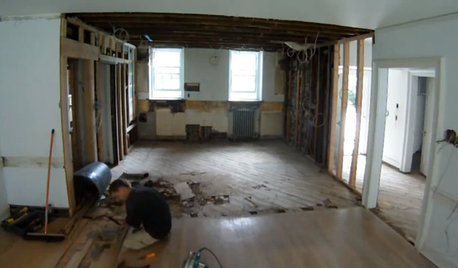



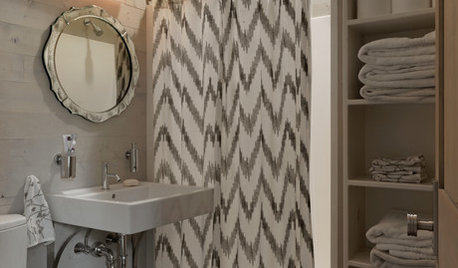
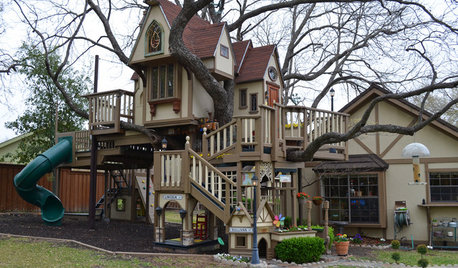












Carol_from_ny